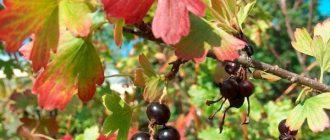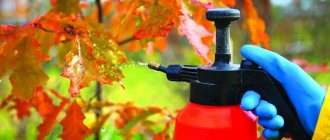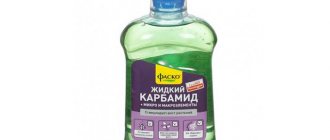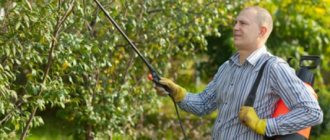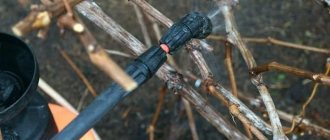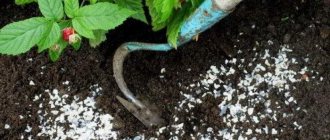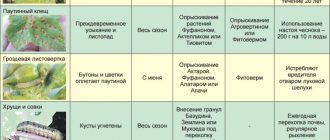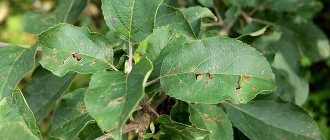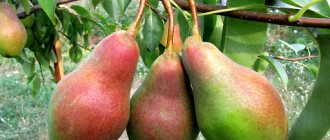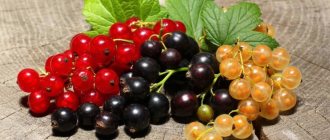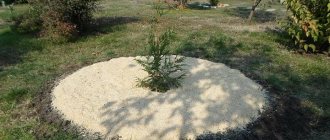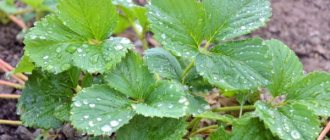Coniferous plants in the garden are a true decoration, bringing grace and severity to the landscape, possessing a magical attraction that is bewitching and calming. The erroneous opinion that conifers overwinter without problems leads to diseases and loss of decorativeness of plants. Therefore, preparing coniferous plants for winter is an important and necessary condition for preserving their decorative properties. A few simple and quite feasible techniques will help preserve their solemn beauty during wintering.
We'll feed you and give you something to drink
Preparations begin at the end of summer. The first thing you should take care of is feeding. From August, nitrogen should be completely eliminated, focusing on phosphorus-potassium fertilizers. This will speed up the ripening of new growth, increase the stability of the root system and have a general strengthening effect. After the leaves of deciduous plants have completely fallen off, begin moisture-charging watering. This is a prerequisite for a favorable wintering of conifers. The diameter of the irrigation circle must be no less than the diameter of the crown. Moreover, the younger the plants, the more important it is for them to water, since their roots have not yet gained sufficient strength and can be seriously damaged when the soil freezes. Increased soil moisture will prevent this.
It is recommended to mulch the tree trunk circles; this will help protect the root system from frost. In this case, the mulch layer should be at least 5 centimeters, quite loose. In early spring, it is necessary to remove the mulch to prevent the roots from getting warm.
We strengthen the conifers
It is very important to maintain the integrity of the crown during the upcoming snowfalls and freezing rains. For thin coniferous branches that have become brittle in the cold, even icing will become an unbearable burden, not to mention snow piles. Few people have the opportunity in winter to shake it off their plants after each snowfall. Therefore, it is easier to prevent by preparing plants in the fall than to eliminate the consequences with the onset of spring.
Vertical pyramidal crowns are tied in a spiral from bottom to top without tightening. There is no need to tightly “swaddle” the conifer; the crown must breathe. It is quite enough to fix the branches in their natural position.
For multi-trunk forms, in order to avoid the collapse of the trunks, they are fixed with string without tightening them. For horizontal (creeping) species, it is recommended to place stones under the skeletal branches to prevent them from deforming under the weight of snow, otherwise the branches will remain bent and the crown will lose its natural appearance. It is stones, and in no case wood, which, when wet, can become a haven for various types of fungal infections. Young thin-trunked “verticals” must be equipped with support stakes, driving them next to the trunk and securing them in tension. This measure will prevent the tree from tilting under the weight of precipitation and will protect it from breaking, bending and eversion along with the fragile root system.
Final preparations
Pre-winter treatment of coniferous plants is recommended to be carried out comprehensively, against pests and diseases at the same time. Fungicides are used to combat fungal and other infections, and insecticides and acaricides are used to combat harmful insects. Spraying with copper-containing preparations for diseases shows very good results. For pests, you can use the drug "Actellik".
It is best to refrain from pruning conifers in the fall; it will weaken the plant and reduce the chances of a successful wintering. Even if it is a hedge, the formation of the crown should be postponed until spring. Only damaged and broken branches are removed as needed.
Diseases of coniferous plants
Most often, conifers and their varieties suffer due to unfavorable environmental conditions. They do not tolerate increased humidity , flooding of roots by ground or flood waters, drying out of roots and deficiency of substances such as nitrogen or iron . All these factors themselves weaken the plant and at the same time open the way for infectious diseases. It is on them that we will dwell in more detail.
Protect from burns
Conifers are sheltered, as absurd as it may sound, not from frost, but from heat and sun. A biological feature of these plants is the ability to very quickly emerge from dormancy under the influence of even a slight increase in temperature during a thaw. At the same time, the roots located in the frozen ground are not able to provide the needles with a sufficient amount of moisture. To protect against such troubles, coniferous plants are shaded for the winter with screens on the south side or completely covered with covers.
In no case should you use non-woven insulation or polyethylene, which are designed to retain heat inside the shelter, as a covering material. Their use can lead to damping off of the crown during a thaw. It is recommended to “cover” the conifers with burlap or gauze, which allows cold air to pass into the crown. The light color of the shelters also helps to reflect the sun's rays, preventing the needles from heating up and leaving their dormant state prematurely. The shelters are removed no earlier than the soil thaws.
Brown Schutte
The most common and dangerous disease of conifers is one of the varieties of schutte - brown schutte, or brown snow mold. It is caused by a fungus of the genus Herpotrichia, which settles on pine, juniper, fir, spruce, cedar, cypress and thuja. It primarily affects young plantings and plants in nurseries. For its development, a temperature of about 0.5°C is sufficient, and lesions are detected only after the snow has melted. On dead brown needles, a black-gray coating of mycelium forms and black dotted formations of the causative fungus are visible. Thin branches gradually die off. The development of the disease is facilitated by high humidity, dense plantings and damage to plants, as well as abundant snow cover and its prolonged melting.
Prevention and control measures for brown schutte
- Free planting of coniferous plants on the site; young trees should be planted separately from adults.
- Remove diseased and fallen needles in a timely manner, trim diseased and dried branches and burn them.
- Brush snow from the lower branches and remove it from the tree trunks.
- During the summer, use special preparations for preventive and therapeutic treatment of conifers. In particular, 1-2% Bordeaux mixture and other copper-containing preparations, combining them with fungicides (HOM, Skor, Abiga-Pik, Chistotsvet, etc.) in accordance with the instructions. Diseased plants need treatment every 10-12 days.
- Treat the soil and above-ground parts with Fitosporin, Gamair, Planriz according to the instructions for use.
Reanimation of green pets
If for some reason winter damage does occur, then when the weather warms up, you should help the plants restore the damaged areas as quickly as possible. Browned needles are sprayed with warm water and shaded with a light cloth. When the average daily temperature reaches eight degrees, they are treated with biostimulants (“Zircon”, “Epin”, “NV 101”), which awaken regenerative processes in plants.
Coniferous plants are the highlight of the garden landscape design, and proper care and proper preparation for winter will ensure the healthy appearance of green pets. It should be remembered that it is easier to prevent damage to plants during the cold period than to treat them later.
Thuja is a coniferous tree belonging to the Cypress family. The lush beauty immigrated to our garden plots from the east of North America. Due to its structure and various colors, thuja is often used in landscape decoration as a hedge. The coniferous tree is quite unpretentious, however, in order for it to have a beautiful appearance, the plant needs to be provided with thorough care in preparation for winter during the autumn period.
Precautions when working with the drug
Iron sulfate is an unsafe substance. To prevent it from harming you and your plantings, follow certain rules for working with it:
- Carefully read the recommended solution concentrations in the instructions. 5-7% solutions can only be used in spring (before buds open) or in autumn, when the plants no longer have leaves. During the growing season, weaker concentrations (0.1-1%) should be preferred.
- Dilute iron sulfate in glass or plastic containers.
- Wear gloves.
- If iron sulfate gets into your eyes, rinse them thoroughly with running water.
Proper use of iron sulfate will help rid the trees in your garden of insect pests, fungal diseases, mosses, lichens and other ailments. No wonder this drug is considered the most versatile in gardening.
If it’s not difficult for you, then share on social networks and rate the articles!!!
Features of caring for thuja in the fall and preparing for winter - general tips and recommendations
How the coniferous tree will survive the winter depends on the quality of autumn care for the thuja. To help the plant survive until spring, it is important to water and feed it on time.
Regular watering should be provided to thuja, which grows in a region characterized by dry autumn. Before the onset of frost, watering should be especially abundant: the roots will be saturated with moisture for a long time, and the wet earthen lump will freeze longer, which will protect the rhizome from sub-zero temperatures. If autumn is full of rain, the coniferous tree is not watered.
Unlike deciduous trees, feeding thuja is not recommended . The thing is that any supply of concentrated fertilizers can push the tree to a new round of crown formation. The shoots that grew on the eve of winter will die under the influence of sub-zero temperatures, thereby greatly worsening the condition of the tree.
Coniferous trees growing in a pot can be fertilized with diluted microfertilizers.
Video: preparing coniferous plants (including thuja) for winter
Pruning thuja in autumn
Removing branches is a very important stage in the autumn care of thuja, since its well-being and beauty depend on garden manipulation. As in any business, when pruning you need to stick to the golden mean so that the plant can recover before the onset of frost.
Why trim thuja?
Depending on the variety, thuja can have the shape of a ball, column or pyramid, so in most cases there is no need to form the crown of a coniferous tree. Why then do they prune thuja?
- To improve the appearance of wood. When pruning an evergreen tree, dried, diseased and insect-infested branches or parts thereof are removed from the crown. If the branch is still alive and the affected area is very small, run your hand along the branch and remove the dried needles. In some cases, instead of the affected needles, healthy ones grow on the shoot, and there is no need to remove it.
Important! Diseased branches should be pruned immediately after they appear. This will help prevent the entire tree from becoming infected.
- To correct the shape . Too long shoots that stand out noticeably from the crown are cut off. Also, during pruning, the top is removed if it has dried out or become too elongated. As a result of cutting off the top, healthy shoots will receive more useful elements, and the tree will activate the growth of lateral shoots, which will give the thuja even more splendor.
- To prevent pest attack and better breathability .
When is it better to prune - in spring or autumn?
Coniferous trees tolerate pruning well at any time of the year. Some varieties are cut 3 times a year. Because of this, we can say that the main thing in crown cultivation is not the time of pruning, but its sequence and correctness. Therefore, pruning of thuja can be carried out in the fall.
Timing for pruning thuja in autumn
There are no specific deadlines for carrying out manipulations aimed at thinning or forming thuja. day for pruning are cloudy, dry weather and temperatures above +4 C. If this rule is not followed, the wounds will take a long time to heal, and the needles near them will turn yellow.
How to properly prune thuja in the fall - instructions and diagram
Pruning thuja is a very scrupulous matter, therefore, in order for it to be beneficial for the plant, the manipulation must be carried out especially carefully.
Thuja is cut as follows:
- Dry, diseased, sun-damaged or insect-damaged shoots are removed from the crown.
- Some of the branches are removed from inside the bush. Thanks to thinning, air permeability is significantly improved. And also manipulation is a precautionary measure against pest attacks.
- To promote growth in width, part of the top is cut off. To achieve the formation of a tree in the form of a ball, removing branches protruding from the crown will help.
- In order to maintain the chosen shape, part of last year's shoots are cut off from the crown. Please note that you cannot trim the tree too much - it may lose its decorative beauty for a long time.
- If it was not possible to trim the thuja on time, the manipulation is postponed to spring or summer. In several approaches, the tree is rid of frozen and excess branches.
The most common thuja cutting patterns are: topiary, spherical, spiral.
A topiary haircut is the formation of a crown in the form of any figure or object. Special stores sell metal forms of various shapes that need to be installed above the plant. After some time, the thuja will fill all the free space of the form. Those shoots that stick out should be cut off.
In a similar way, the crown is formed in the form of a ball or spiral : all excess shoots are gradually removed until the tree takes on the desired shape.
According to experienced gardeners, crown formation is best done a year later, after thinning. During this time, the tree will fully recover and will tolerate large-scale formative pruning without problems.
Video: how to prune thuja in autumn, spring or summer
Care after pruning, feeding
During the week after sanitary or formative pruning, you need to monitor the condition of the thuja, since after active intervention the plant weakens and is highly susceptible to diseases and attacks by false scale insects and aphids. In case of any problem, the thuja is sprayed with special preparations.
Immediately after the crown cultivation is completed, the thuja is abundantly watered and fed. Complex mixtures for conifers, diluted manure, and green manure are used as fertilizers.
Iron sulfate for pests
If we talk about the insecticidal function of iron sulfate, again remember that the drug is not used by green ones. That is, they are not used against aphids and other summer pests. But treating the trunks with iron sulfate in early spring or autumn will kill insects or their larvae. In the first case, those that overwintered under the bark. In the second - those preparing for the winter.
On a note! Concentrations less than 5% will not work. The trunk is generously sprayed or even doused with iron sulfate so that the liquid gets into the small cracks.
How to preserve thuja in winter?
By nature, thuja is endowed with high frost resistance and the ability to withstand the coldest winds. However, recently, breeders have developed ornamental varieties that do not have such characteristics. Also, young trees that are not yet strong enough need shelter for the winter.
Video: how to cover thuja seedlings for the winter
How to properly cover a thuja for the winter?
When preparing thuja for winter, you need to take care not only of covering the roots, but also of protecting the evergreen crown, which during the winter cold can suffer from cold winds, large amounts of snow and bright sun at the end of winter.
Sheltering a thuja for the winter is done as follows:
- First of all, insulate the soil around the perimeter of the root system. To do this, lay mulch material in a layer of 10 to 30 cm. A more precise thickness of the mulch is determined based on the weather conditions of the region where the overseas beauty grows. The best covering material for thuja is peat, rotted manure, straw, compost, soil from under coniferous trees, and dry leaves.
- Small trees are covered with 5-liter plastic bottles: the bottom of the container is cut off, and then the resulting cap is placed on top of a young coniferous tree.
- The crown of adult trees is wrapped with thick paper, lutrasil or agroterm, which is secured with rope or wire.
- To prevent branches from bending or breaking under the weight of accumulated snow, the shelter is regularly cleaned of precipitation.
- When exposed to bright sunlight, the bark of trees becomes severely burned. To prevent such damage, shields are installed on the sunny side in the second or third decade of February.
- The shelter is gradually removed only after spring warmth has established itself.
The level of decorativeness in the next season depends entirely on how well the preparation work of the thuja for winter was carried out.
Video: how to cover a thuja for the winter
How to store thuja in a pot?
Conifers under two years old are often grown in pots or containers. Before the arrival of winter, the plant is fed and then transferred to an unheated room, where the temperature ranges from +4 to +10 C. The thuja, pre-wrapped in paper, will overwinter well in a bright closet or on the balcony.
What are the features of preparing for winter in different regions?
Due to different climatic conditions, the rules for covering thuja are slightly different.
In the middle lane
In the Moscow region, thujas are covered according to the usual scheme: first, they spread a 15 cm layer of mulch, and then wrap the crown with material.
In the Volga region
Trees growing in this region are prepared for winter in the same way as in the middle zone. The main difference is that the thickness of the mulch layer increases by 5 cm.
In the Urals and Siberia
Already from the beginning of winter, a lot of snow falls in the northern regions, the severity of which can harm young and thin-branched trees. Therefore, it is very important to build a wire frame in the shape of a cone before covering the thuja. This design will allow the snow to slide down easily and protect the branches from remaining precipitation.
Typical mistakes in autumn care and preparation for winter
Due to ignorance of the technology of growing an evergreen tree, novice gardeners make unacceptable mistakes when preparing thuja for winter, namely:
- The crown is not covered for the winter.
- Feed with fertilizers for deciduous trees.
- Do not install solar screens.
- The crown is trimmed on a sunny day, which causes the needles near the cut to turn brown.
Autumn care for thuja will not cause difficulties for the owner of this evergreen plant who is most distant from gardening. So that after wintering the coniferous tree does not lose its decorative value, it needs to be watered abundantly, pruned, and also cover the soil around the trunk.
The well-being of the plants, their health, and appearance throughout the year depends on how thoroughly the conifers are prepared for winter. It would seem that coniferous trees feel great growing in central Russia, and no winters are scary for them. Indeed, many of the coniferous plants are unpretentious, but even local pines and spruces may not be able to withstand all the vagaries of winter, not to mention exotic plant species. Therefore, you need to worry about how to help your plants survive the frosty time well and preserve their beauty. Each type of coniferous plant requires an individual approach, but there are some general points. So, let’s reveal a couple of secrets on how to prepare conifers for winter.
Moisture-recharging irrigation
Preparing conifers for winter begins in the fall, when deciduous trees shed their crown. At this time, it is necessary to water the roots of the plants well, about 5-8 buckets for each. Such watering is especially desirable for plantings made in this and last seasons, varietal specimens and exotics - in any year of life.
It is much easier to prevent diseases and other damage to trees and shrubs during cold days than to treat them afterwards and restore lost decorative properties
What is it for? The needles of such plants wake up from frosty sleep earlier than those of others. And it often happens that the roots at this time are not yet able to “extract” enough moisture due to frozen soil. As a result, the needles burn.
If the soil is well and promptly moistened, it will freeze less and the risk of spring damage will be minimal.
Strengthening new plantings
Coniferous trees collect large amounts of snow on their branches. And if winter also pleases us with heavy snowfall, then a sticky snow mass may form on them. This weight is sometimes too heavy, especially for seedlings that have not had time to take root. Therefore, in order to avoid them falling and prevent the roots from breaking, it is better to secure the plants with guy wires. This material will be useful for owners of blue spruce trees.
Snow can be knocked off plants using a board or pole pre-wrapped with soft cloth.
Burn protection
Cypress trees, columnar junipers, some varieties of thuja and Canadian spruce must be protected from sunburn. To do this, cover the conifers for the winter with special material.
Good for this purpose:
- sackcloth;
- wall mesh;
- woven propylene panels.
It is not recommended to use lutrasil and other covering materials, as they accumulate solar heat.
Coniferous trees collect large amounts of snow on their branches. And if winter also pleases us with heavy snowfall, then a sticky snow mass may form on them
Having chosen the appropriate material, it must be placed on the plant and tied with twine, without tightly tightening the branches. There is no need to “wall up” the entire crown down to the last branch. If there are “windows” left, this is even good, since there will still be access to fresh air. If the plant is very large, then simply shade its southern side. For fans of dwarf conifers this article will be useful.
Preparation of conifers for winter begins in the fall, when deciduous trees shed their crown
Preparing conifers for winter (video)
Crown tying
Tying the crown is necessary for those plants that are resistant to wind and are not afraid of the spring sun. It is necessary to tie their branches loosely so that they do not bend or break under the weight of snow or freezing rain.
Each type of coniferous plant requires an individual approach.
What to do, if…
- Did a lot of sticky snow fall?
Snow can be knocked off plants using a board or pole pre-wrapped with soft cloth. There is no need to shake the trees and hit them with all your might; tapping them lightly with small dots is enough. This way you won’t damage either the bark or the branches.
- was it freezing rain?
In this case, try to give the branches their original position using ties and supports. There is no need to try to melt the ice with a hairdryer or warm water.
Along with artificial heat, the kidneys can wake up prematurely. When sunny weather arrives, the ice will come off on its own; you just need to support the plants until this period.
Cypress trees, columnar junipers, some varieties of thuja and Canadian spruce must be protected from sunburn
The well-being of the plants, their health, and appearance throughout the year depends on how thoroughly the conifers are prepared for winter. Small labor and material costs can prevent the occurrence of diseases, as well as the death of rare and valuable specimens. It is much easier to prevent diseases and other damage to trees and shrubs during cold days than to treat them afterwards and restore lost decorative properties. We recommend learning how to protect and treat trees from sunburn.
There is an opinion that conifers are unpretentious plants, and therefore tolerate even harsh Russian winters well. However, they also require good care, protection from diseases and proper processing in the autumn. Then coniferous plants will delight their owners for many years with their beauty and the enchanting smell of resin.
Features of growing coniferous crops
Coniferous crops are unpretentious plants; they do not require too much light, moisture, or heat. The only thing you need to do regularly is feed the plants. Fertilizing performs the function of tree growth. But novice gardeners should know that coniferous trees react particularly acutely to all types of fertilizing, in particular, they are very sensitive to organic and chemical fertilizers. They can die from a large amount of nitrogen in the soil; they develop chlorosis too quickly.
Preparing for winter
It is necessary to prepare conifers for the cold season in advance. In the fall, they are thoroughly watered (up to 9 buckets for each plant), young trees are mulched with tree bark, and fertilizers are applied. Some gardeners prefer to feed conifers in the fall with rotted compost (cover the plants with a layer of 5 cm), others use special purchased fertilizers.
Trimmed conifers are covered for the winter. This is done after abundant watering and fertilizing. During the cold season, plants will not be able to receive adequate nutrition, and therefore they must make the necessary reserves in the fall. The main thing is to follow the dosage and not “overfeed” the coniferous trees.
Note. If you apply too much fertilizer in the fall, the plant will begin to grow rapidly and will not be able to prepare for winter. The result can be disastrous - the conifer will freeze.
These trees really need magnesium. It is this element that is responsible for the integrity of the needles. With a deficiency of magnesium, the needles turn brown, dry out and fall off. This is most pronounced during the dry period. To compensate for the deficiency of this microelement, it is better to use liquid mineral complexes specifically designed for coniferous trees.
Work time
Preparations for winter begin from the very beginning of autumn. Conifers are treated against diseases and pests, if necessary, they are mulched, watered, and weeds are removed. If we talk about fertilizing, it is usually applied twice: in May (during the period of active growth and development) and in August-September.
If you are late with the autumn application of fertilizers, then the young conifers will simply have a nutritional deficiency. After all, they will spend a lot of effort on rooting. Hungry trees find it more difficult to survive in winter and are more likely to die.
If you plan to use liquid formulations, you should strictly follow the instructions. A highly concentrated solution will destroy the root system. To apply fertilizing, dig a shallow circular groove. The nutritional composition is poured there.
If granular fertilizer is used, do not leave it on the surface. It should be embedded in the soil. In parallel with fertilizer, dolomite flour is often added, which not only deoxidizes the soil, but also supplies it with a number of microelements.
Iron sulfate for diseases
Plants treated with iron sulfate are protected from diseases caused by parasitic fungi. Among the infections:
- Oidium (grape)
- powdery mildew - real and false;
- apple and pear scab;
- Alternaria (fruit trees and shrubs)
- gray rot - moniliosis (plum, cherry, apple trees)
- cocomycosis (stone fruits - plum, cherry, apricot, pome fruits - apple tree, pear)
- Clusterosporiasis (on stone fruits - cherries, peaches, etc.).
Gardeners who are familiar with such infections do not need to be convinced of the need for prevention, since treating diseases takes time and effort, and it is not always possible to save the crop.
Fertilizers and fertilizers
Coniferous trees need adequate nutrition, but not all fertilizers are equally beneficial for them.
Rules for choosing fertilizing
- Fertilizer for conifers should contain a minimum of nitrogen.
- Magnesium in the supplement should be in an easily digestible form.
- A large number of microelements will only benefit plants.
When choosing a nutrient preparation, you must be guided by the given rules, because an incorrectly selected fertilizer will only cause harm. Gardeners advise that it is better to skip fertilizing than to destroy the plant by wrong actions.
It is enough to feed conifers twice a year: in spring and autumn. The second feeding is designed to prepare the plants for the cold period and assist in the maturation of growth over the past year.
It is especially important to apply fertilizers to young conifers, whose root system is not yet strong enough and is not able to independently extract food from the soil.
Organic
Conifers should not be overfed with organic matter for the winter. In young plants, excess nutrients can cause burns. In addition, autumn overfeeding will disrupt the process of preparing plants for the dormant period.
Compost
Rotted plant residues are a traditional type of fertilizer for conifers. It is this fertilizer that serves as an excellent imitation of native forest soil. It is to the application of compost that plants are so responsive.
They are fed as follows: the top layer of soil under the tree is thoroughly loosened, then sprinkled with a layer of compost (8-12 cm is enough). Fertilizer should not be left on the surface, so it is lightly embedded in the soil. This will make it easier for plants to absorb nutrients.
If there is no compost heap on the site, you can purchase ready-made compost-based fertilizers.
Some gardeners instead use a solution of vermicompost or a regular herbal infusion (popularly called green fertilizer). Conifers will also like fertilizer made from coffee cake.
All fertilizing is usually accompanied by watering (for one conifer - from 140 l). Firs and thujas especially love water. In addition, it is recommended to carry out the so-called sprinkling of coniferous trees in the fall, designed to eliminate pollution from their above-ground parts.
Note. Autumn application of compost is not suitable for all conifers. In some cases it is better to do this in the spring.
Vermicompost
This organic fertilizer is convenient to use, effective, and most importantly, it helps strengthen the immunity of conifers.
In addition to the main macroelements, vermicompost contains at least 10 microelements and vitamins that will benefit conifers.
Mineral
When choosing suitable mineral complexes, one should not forget that they should be low in nitrogen, but high in magnesium and other trace elements. You don’t need a lot of nitrogen either in the fall or in the spring. This element promotes intensive growth of shoots, which is unacceptable for slowly growing conifers. If the branches grow quickly, by winter they simply do not have time to grow stronger and ripen, and therefore inevitably die.
For the same reason, fresh manure is not placed under conifers, even in diluted form. There should be no excess nitrogen either in mineral complexes or in organic matter.
Many gardeners are convinced that conifers do not need organic matter at all, since they accept ready-made mineral complexes much better. However, any mineral fertilizer should be applied diluted to make it easier for the plant root system to absorb nutrients and vitamins.
Do not forget about periodic liming of the soil around the conifers. For this, dolomite is used. In addition to its main task, it supplies the soil with magnesium and calcium, and in an easy to absorb form.
Feeding conifers in the fall
How to feed conifers? Complex fertilizers and ordinary garden mixtures are not suitable for evergreen plants. Tinctures of weeds and grass, as well as manure, are the worst fertilizer for coniferous plants. They cause rapid growth of green mass, which ends in yellowing and sometimes death of individual plants. It's a matter of the composition of the feeding. It is better not to feed conifers at all than to feed them incorrectly once.
There are many special fertilizers in stores that say “For conifers.” But before purchasing and using, it is recommended to carefully study the chemical composition of the mixtures. What you should pay attention to?
The total area of pine needles that make up the needles of trees is several times smaller than the total area of leaves of deciduous trees. Conifers do not receive most of their nutrition from their roots; they obtain it through photosynthesis. The process is impossible without magnesium, which is an integral part of the chlorophyll molecule. Therefore, when choosing a fertilizer for coniferous plants, it is necessary that it contains magnesium.
Fertilizers with a high nitrogen content should not be used to feed evergreen plants. It is not recommended to do this at any time of the year. Nitrogen ensures intensive growth of green shoots. They grow so fast that the branches do not have time to ripen. During the winter cold they most often die. For this reason, manure cannot be used in any form.
Experts believe that it is better to use mineral fertilizers to fertilize coniferous crops. From organic matter, rotted compost and vermicompost are suitable. This is a product of earthworm processing.
Autumn foliar feeding
Foliar feeding has found wide application in modern methods of plant care. Fertilizer for Christmas trees and other coniferous trees is applied by spraying in an aqueous solution over the needles. If fertilizer is applied at the root, only 20% of the nutrients are used by the plants. The foliar method of applying fertilizer for conifers is more effective. Using it, you can ensure that up to 80% of the nutrients are absorbed by the plant.
Foliar feeding of conifers is recommended in hedges where plants are planted very densely. The doses of drugs that are used with it are much lower than with root application. Beneficial substances enter the plants and immediately begin to participate in the metabolic process. Conifers become more resilient and get sick less.
Compost as fertilizer
Compost is considered the most traditional fertilizer. It has been used since ancient times by agronomists and gardeners involved in the cultivation of coniferous crops. For evergreen shrubs, compost is the best fertilizer. This is a forest soil simulator, so they grow better on it.
Foliar treatment
It is usually carried out with the aim of protecting conifers from pests and for external replenishment with useful compounds.
Insecticides are usually used to destroy harmful insects, as well as their larvae. If the plant is overpowered by mites, then take acaricides. To eliminate fungus - fungicides. This is the general name for groups of drugs designed to solve a specific problem.
When processing conifers, you should strictly follow the instructions. Otherwise, after the destruction of pests or diseases, the tree itself will die.
Important! You should not experiment with mixing different drugs. This will not benefit the conifers.
Biofertilizer "BioGrow"
Allows you to increase the yield from your summer cottage by 50% in just 2-3 applications
Find out more
Processing is prohibited on hot days. The best time for this is late evening or early morning without dew and wind.
In the autumn, you need to have time to do several such treatments. After all, the killed pests probably managed to lay eggs, diseases (especially fungal ones) - spores.
When using any pesticides on your site, you should take care of your own safety (protect your eyes and skin), and also strictly follow the dilution scheme indicated on the packaging.
Foliar feeding
Coniferous trees are very fond of external treatment with nutritional compounds. It is produced by spraying with special devices.
If you use the root method of fertilizing, the plants will be able to absorb only 20% of the beneficial elements; with the foliar method, this percentage increases to 80.
You cannot do without foliar fertilizing in cases with coniferous hedges on the site. Usually they are planted quite densely, and therefore experience a lack of nutrition. Foliar feeding can solve this problem. Their use in autumn leads to the accumulation of nutrients and favors successful wintering.
Note. Nutrients entering the needles begin to act within 4 hours after application.
Biofertilizer "BioGrow"
Allows you to increase the yield from your summer cottage by 50% in just 2-3 applications
Find out more
Protecting plants from rust and browning of needles
To protect coniferous plants, it is necessary to initially understand what kind of disease we are dealing with? Infectious, non-infectious, fungal, bacterial. The treatment regimen depends on this.
If you see signs of rust on coniferous plants, then it is necessary to carry out 2-3 treatments with Topaz and Strobi fungicides, according to the instructions, at intervals of 20 days.
The presence of causative agents of browning of needles or shutte predisposes to the use of the fungicide Topsin M 500 SC. After 10 days, spraying should be repeated.
If you do not want to overuse chemicals, you can use Biosept Active during the second treatment. In subsequent years, especially with high humidity, for prevention, Biosept Active in combination with Vermisol is sprayed on the plants every 2 weeks.
We also remember that conifers infected with late blight must be removed along with the roots and removed, and the place where they grew must be treated with a fungicide.
For prevention purposes , apply complexes of macro and micro fertilizers in the fall or spring. Carry out preventive spring treatments of conifers with copper-containing preparations - Bordeaux mixture, Hom, etc. Improve the structure of the soil by adding sand or vermigrunt.
Spray your Christmas trees and junipers with bioactive agents, Fitoverm, Akarin. And let the scent of the forest be a familiar guest in your garden.
—Categories
- AGROTECHNIQUES OF NATURAL FARMING (215)
- ALTERNATIVE TO GARDEN (260)
- Balconies and more (121)
- Home pond (25)
- Winter garden (29)
- Miniature gardens (97)
- DISEASE CONTROL (343)
- PEST CONTROL (579)
- FIGHTING GNUS (39)
- WEED CONTROL (81)
- IN THE FOREST, HIKE, FISHING, IN EXTREME SITUATION (89)
- VIDEO ABOUT THE GARDEN (538)
- WATER OBJECTS (196)
- =GENERAL TIPS= (32)
- Reservoirs (163)
- Imitation of a pond, dry stream (15)
- LAWN (55)
- COOKING AT THE COUNTRY (1623)
- Everything in a row (26)
- Desserts (139)
- Brazier, barbecue, grill, fire (187)
- Drinks (105)
- Pancakes, pancakes, pies, etc. (454)
- Main courses (631)
- First courses (108)
- Salads, snacks (199)
- Spirits (20)
- Storing food without refrigeration (10)
- MUSHROOMS AT THE COUNTRY (24)
- COUNTRY PHARMACY (0)
- COUNTRY HOUSE (771)
- Country house decor (185)
- MARINE STYLE (MEDITERRANEAN) (114)
- Interior (223)
- Furniture (163)
- Cute, cozy things (92)
- Original houses (103)
- Utilities (38)
- DECORATIVE SHRUBS (305)
- TREES (23)
- FOR CHILDREN IN THE GARDEN (166)
- PATHWAYS, SITES (136)
- LIVING GARDEN ASSISTANTS (127)
- PREPARATIONS FOR WINTER (1505)
- Jams, jams: OTHER (124)
- Preserves, jams: FRUIT (124)
- Preserves, jams: BERRIES (123)
- Wines, liqueurs, tinctures (162)
- Freezing – VEGETABLES (46)
- Freezing – FRUITS, BERRIES (18)
- Ketchups, sauces (61)
- Compotes, etc. (40)
- Vegetable caviar (43)
- Semi-fabricated products (129)
- Benefits for canning (31)
- Salads (317)
- Pickles: ASSORTED (26)
- Pickles: EGGPLANT (55)
- Pickles: PEAS, BEANS, CORN (32)
- Pickles: MUSHROOMS (37)
- Pickles: Zucchini, Squash, Watermelon (62)
- Pickles: CABBAGE (24)
- Pickles: CUCUMBERS (63)
- Pickles: PEPPERS (89)
- Pickles: TOMATOES (140)
- Pickles: CAULIFLOWER (9)
- Pickles: GARLIC, RADISH (14)
- Drying (94)
- Horseradish and savory snacks (25)
- HEALTH IN THE GARDEN (89)
- RECREATION AREAS (139)
- .DIFFERENT IDEAS (78)
- Hammocks, sun loungers (46)
- Privacy zone (14)
- Patio (21)
- COUNTRY DECOR IDEAS (730)
- INVENTORY (44)
- Other tools (30)
- Small mechanization in the garden (9)
- Fokina flat cutter (10)
- INTERESTING PLANTS OF THE WORLD (155)
- ROCKY SLIDE (101)
- =GENERAL TIPS= (62)
- Rock garden (58)
- PICTURES (5)
- COMPOST, FERTILIZERS (460)
- CURIOUS ! (51)
- LANDSCAPE DESIGN (284)
- MEDICINAL PLANTS AT THE COUNTRY (406)
- SMALL GARDEN (93)
- SMALL ARCHITECTURAL FORMS (280)
- Gazebos, pavilions, rotundas (54)
- Flowerpots (11)
- Fence, fencing, border (39)
- Swings (16)
- Wells (7)
- Stairs, retaining walls (17)
- Summer kitchens, barbecues, grills (10)
- Bridges (8)
- Pergolas, arches, trellises, trellises (35)
- Benches, benches (58)
- Garden sculpture (24)
- Lanterns, columns (10)
- MUSIC (33)
- VEGETABLE GARDEN (2333)
- .Other plants. (130)
- =BEDS= (84)
- =ORNATIVE VEGETABLE GARDEN= (82)
- =GENERAL TIPS= (280)
- =SOWING, SEEDLING, PLANTING OF VEGETABLE CROPS= (384)
- Watermelons, melons (27)
- Eggplant (48)
- Zucchini, squash, zucchini (38)
- Cabbage (114)
- Potatoes (186)
- Onions, garlic (236)
- Carrots (82)
- Unusual beds (7)
- Cucumbers (284)
- Peppers (98)
- Radish, turnip, radish (44)
- Beetroot (37)
- Salads, asparagus (6)
- Tomatoes (414)
- GARDEN ON THE WINDOW SILL (150)
- USEFULNESS (77)
- Devices (49)
- Conspiracies (13)
- Computer devices (6)
- GREENHOUSES, GREENHOUSES (100)
- SITE PLANNING (85)
- FRUIT TREES, SHRUBS, BERRIES (1151)
- =TRIMING, WHITESHING, CARE, FORMATION= (142)
- =FEEDING= (13)
- =LANDING, STRUGGLE= (97)
- =VACCINATIONS= (42)
- Quince (7)
- Actinidia (16)
- Grapes (74)
- Cherry, sweet cherry (38)
- Pear (22)
- Honeysuckle (25)
- Strawberries, strawberries (310)
- Irga (12)
- Cranberries, blueberries, lingonberries, etc. (24)
- Gooseberry (58)
- Schisandra (9)
- Raspberries, blackberries (154)
- Sea buckthorn (25)
- Peach (12)
- Rowan, chokeberry (4)
- Plum, sloe (24)
- Currant (125)
- Apple tree (97)
- WATERING (113)
- LANDING (2)
- SOIL, MULCH (129)
- HOLIDAY AT THE DACHA (170)
- Children's party (6)
- New Year (111)
- Easter (6)
- Picnic (31)
- Family holiday (28)
- SPICE BEDS (133)
- VARIOUS TIPS (391)
- DIFFERENT IDEAS (168)
- S A M O D E L K I (430)
- LINKS (70)
- GARDEN PLANTS (28)
- GARDENS, PARKS, FLOWER BEDS OF THE WORLD (455)
- SEASONS IN THE GARDEN (489)
- =LUNAR CALENDAR= (22)
- Spring (111)
- Winter (37)
- Summer (54)
- Folk signs (28)
- Autumn (263)
- ANIMAL)))))) YARD (91)
- SAVE THE HARVEST (102)
- GARDEN STYLES (105)
- CONSTRUCTION AT THE COUNTRY (702)
- Bath, sauna, shower, bathhouse, washbasin (95)
- Water on site (43)
- House (208)
- Fence, fencing, border (86)
- Well (11)
- Roof (12)
- Summer kitchens, barbecues, grills (85)
- Outbuildings (49)
- Garden lighting (36)
- Stoves, fireplaces (96)
- Repair (32)
- Toilet (33)
- TOPIAR ART (10)
- SELF-CARE AT THE COUNTRY (50)
- Beauty from the garden (38)
- LET'S LEARN FROM EACH OTHER! (107)
- F O T O (54)
- FLORISTRY (185)
- HVOYNIKI (97)
- FLOWER BEDS (720)
- =GENERAL TIPS= (83)
- Vertical gardening (127)
- Ideas for original flower beds (433)
- Mobile flower beds (85)
- Flower garden near the house (front garden) (38)
- Continuous flowering beds (25)
- Flower beds with conifers (13)
- Flower beds shade and partial shade (38)
- FLOWERS IN THE HOUSE (363)
- FLOWERS, CARE, ETC. (1583)
- .Trendy plants, vines. (99)
- .Perennials. (696)
- .Annuals. (205)
- .Primroses and bulbous plants (161)
- .Ground cover. (77)
- =DIFFERENT FLOWERS= (105)
- Alyssum (1)
- Amaranth (1)
- Pansies (3)
- Astilbe (8)
- Begonia tuberous (3)
- Whiteflower (1)
- Dahlias (18)
- Gladioli (26)
- Delphiniums (10)
- Doronicum (1)
- Calendula (1)
- Clematis (49)
- Cosmea (1)
- Cinquefoil (3)
- Daylily (13)
- Buttercups (2)
- Young (1)
- Montbrezia (4)
- Nasturtium (12)
- Sedums (4)
- Petunias (38)
- Peonies (24)
- Sunflowers (1)
- Primrose (6)
- Roses (179)
- Rudbeckia (2)
- Siberian irises (1)
- Tulips (34)
- Hosts (21)
- Chrysanthemums (13)
- Echinacea (3)
- Yasnotka (1)
Read also: What are earthworms called in the food chain?
-Music
—Search by diary
—Subscription by e-mail
-Statistics
Friday, September 08, 2021 14:40 + to quote book
Many of us do not know, or have forgotten, an old but time-tested remedy for combating diseases, pests and lichens - iron sulfate! What are the pros and cons of using this drug, what are its features?
Whitening trees with iron sulfate Iron sulfate is effective against grape diseases
Iron sulfate or ferrous sulfate is an effective and versatile remedy. It not only helps fight pests, but also improves fruiting and restores old trees. With the help of this fertilizer, the plant receives the iron necessary for its respiration and growth, the lack of which can cause a disease such as chlorosis in many fruit crops.
Iron sulfate is used very widely in gardening. If you need to whiten trees, dilute 100 g of powder in a liter of water, so you will get an excellent means of protecting trunks from insects and the scorching sun. The same solution can be used to disinfect tree hollows and treat tree wounds.
To treat crops against scab and septoria, a 5% solution is used, and to treat black spot on roses, vitriol is taken at a concentration of 0.3%.
A composition of 30 g of powder and 1 liter of water will help protect stone fruit plants from moss, lichens and gray rot.
To process seed crops you need to take a little more - 50 g of powder.
Iron sulfate is an excellent preventative against necrosis, anthracnose and other diseases of grapes. The first time the vine is treated in early spring with a 5% solution, after two weeks the procedure must be repeated.
Pest Control
Iron sulfate is used in gardening as an insecticide to kill harmful insects. It kills not only pests, but also their larvae and eggs. Vitriol is very effective against the worst enemy of trees, the apple borer. To combat it, it is necessary to spray the plants and the soil around them with a 1% solution before the buds open. The best time for treatment is mid-April, when the insects have already laid eggs. The trees are treated a second time with a 5% solution in the fall, when all the leaves have fallen.
Iron sulfate as fertilizer
The use of iron sulfate in gardening is not limited to its fungicidal and insecticidal properties. It is also a good fertilizer and allows you to deliver iron to plants in an easily accessible form, without which they cannot grow and develop normally.
Lack of iron leads to yellowing and falling of leaves, death of shoots, and poor development of fruits.
Iron sulfate is an excellent fertilizer for feeding potatoes, tomatoes, and cabbage. Approximately 7 g of the drug is diluted in 10 liters of water and watered with the resulting composition of the plant. It is also added along with compost for digging. To do this, for every 10 kg of organic matter, take 100 g of vitriol.
Use of copper sulfate
The antifungal properties of copper sulfate have long been known, so in gardening it is primarily used as a fungicide. It is used to treat flowering ornamental plants, fruit bushes and trees against moniliosis, anthracnose, various types of rot, spotting, scab and other diseases.
The use of copper sulfate in gardening is effective both for the prevention and treatment of viral and fungal diseases. Treatment is carried out in early spring, late autumn and during periods of active activity of certain pests.
The copper sulfate solution is not stored for long, so it is prepared just before use. Typically, plants are sprayed with a 1 or 3 percent composition before buds open.
Copper sulfate can also be used to disinfect the roots and seedlings of raspberries, gooseberries, currants, as well as strawberry and strawberry mustaches. To do this, they need to be immersed in a 1 percent solution for three minutes and then rinsed thoroughly.
Read also: How to make an irrigation system at your dacha
When spraying, remember to take precautions. Treat with copper sulfate until buds appear.
How to prepare Bordeaux mixture
Bordeaux mixture has been used for about a hundred years and is one of the most effective means of preventing fungal diseases in plants. To prepare it, you need to add 100 g of copper sulfate and slaked lime to a bucket of water (10 l). First, vitriol is diluted in 5 liters of water, lime is slaked separately in a small amount of liquid, and then brought to a volume of 5 liters and filtered. Next, the two parts of the solution are mixed, but not immediately, but gradually, stirring constantly. If everything is done correctly, the composition has a light blue tint.
Copper and iron sulfate today have given way to more modern chemicals and are not as popular as before, and in vain. Many gardeners should take note of undeservedly forgotten and very effective remedies that will help get rid of all kinds of pests and fungi.
Maintaining order in the garden is always associated with resisting various diseases and plant pests. You can stop the invasion of insects, the development of bacteria and fungi with the help of various new drugs. But experienced gardeners believe that iron sulfate will give a head start to any super-drug and will significantly save money for treating trees and shrubs.
Features for plants
All conifers require their own autumn treatment: some will not survive the winter without abundant watering, others without feeding, and others without shelter. Indeed, despite all the similarities in care, there are also significant differences.
For pine
Before the first frost, the root system of newly planted trees is covered with a layer of peat (8-9 cm). In this case, peat plays the role of mulch, which will protect from frost and prevent moisture loss. In some regions, young pines are also covered with spruce branches to prevent frostbite on the crown. It will also save plants from sunburn at the very beginning of spring.
It is generally accepted that an adult conifer does not need feeding at all. In the forest it is humus from fallen leaves, and in the plots it is rotted compost. When embedding it in the ground along the tree trunk, it should be taken into account that the pine rhizomes are located close to the surface - they can easily be damaged.
Mineral fertilizers for pine are used once a year, just like organic ones. They are usually spread over different periods: if compost is added in the fall, then the mineral complex is put aside until spring. Or vice versa. There is no fundamental difference here. However, some gardeners are categorical on this issue, preferring to apply mineral fertilizers exclusively in the spring. Usually they are not even bred, but simply scattered around the tree and watered abundantly.
For spruce
Spruce also needs preparation for winter. But, in addition to peat, the tree trunks can be covered with non-woven fabric or kraft paper.
Adult plants do not need feeding if there are no external signs of starvation. After all, they practically do not grow until they are 6 years old, and therefore consume few nutrients. Special growth stimulants are suitable for them, as well as complex formulations, which are recommended to be used no more than 1-2 times a year.
Biofertilizer "BioGrow"
Allows you to increase the yield from your summer cottage by 50% in just 2-3 applications
Find out more
Spruce needs feeding after 7 years, when the tree begins to grow up to 0.5 m per year. If a forest spruce grows on the site, and not an ornamental (dwarf) one, you should not overfeed it, so as not to spoil the entire landscape design. Gardeners note that with poor nutrition, such spruce trees grow for no more than 3 years, then a beautiful, fluffy crown begins to form.
Pros and cons of using iron sulfate
Knowing the characteristics of iron sulfate, taking into account the recommendations of manufacturers and agrochemists, the gardener will only get benefits from its use in the country. After all, there are a lot of advantages in iron sulfate:
- the action as a fungicide is directed against the main fungal diseases of garden crops, but not for treatment, but for protection - prevention;
- if the buds of fruit crops are preparing to open, and frosts are in the forecast, irrigation with iron sulfate will suspend the beginning of the growing season for a week;
- effective prevention of chlorosis - feeding at the root or with a one percent solution on the leaf;
- destruction of lichens and moss fouling on the trunks of fruit trees
- enriches the soil with iron if applied in the fall during digging.
On a note! An undoubted advantage is the inexpensive cost and the process and recipe itself.
Its use as an antiseptic for whitewashing tree trunks and protecting the walls of vegetable stores from fungus and mold is known to gardeners. But not everyone knows that iron sulfate helps to cope with rotting and cesspool odors.
Disadvantages of ferrous sulfate, if you do not take into account the harm due to non-compliance with the rules for preparing the solution:
- harmless to viruses and bacteria that cause dangerous infections;
- early spring spraying inhibits bud break;
- The drug is characterized by excellent solubility; it is easily washed off by rain;
- annual treatment with iron sulfate twice - at the start of the season and before winter - will lead to a shift in the acid-base balance of the soil on the site, which is not bad for carbonate soils, but dangerous for slightly acidic ones;
- Plants need divalent iron, but oxidation in air for 10-14 hours leads to a change in the formula, after which plant protection no longer works;
On a note! The main disadvantage is considered to be the danger of working in the spring due to the risk of burning the greenery that breaks out of the buds.
But experienced gardeners note the following scheme of preventive treatments:
- early spring - copper sulfate or Bordeaux mixture (three percent)
- after November - treatment of trees with iron sulfate.
The scheme is effective and safe, since the listed copper-containing substances are not so phytotoxic. One percent solutions of products with copper protect apple and pear trees, cherries and apricots more reliably throughout the season than 1% iron sulfate. The latter is significantly inferior because it does not work as a fungicide in such a percentage - only exclusively as a top dressing to prevent iron deficiency.
Popular drugs
Well-known, widespread products that can be purchased in stores.
Florovit
A fertilizer specially developed for conifers, containing a minimum amount of nitrogen, a lot of phosphorus, potassium and magnesium. Autumn feeding with this preparation not only nourishes the plants, but also increases their immunity, allowing them to survive even the harshest winter. Release form: bags, plastic buckets of different weights. The approximate cost is from 620 rubles per 3 kg.
Osmocote
The fertilizer is notable for its prolonged action. As soon as the soil temperature drops below +5, the granules stop dissolving. They will continue to operate in the spring. Therefore, when it is applied in the fall, there is no need for spring feeding. The approximate cost is 500 rubles per 0.5 kg.
Bona Forte
Fertilizer is famous for its efficiency. One package (5 kg) is enough to feed 200 conifers. In addition to the main macroelements, it contains silicon and other microelements. The drug prevents browning of needles and strengthens the root system of plants. Does not contain chlorine. The average cost is from 419 rubles per 5000 g.
How to dilute Iron sulfate?
Ferric sulfate is well diluted. But there are a number of conditions, without which the beneficial properties of the drug are lost:
- Do not use tap water. Iron sulfate is diluted in spring water, rain water or from a well.
- Hard water renders the solution useless. It contains a lot of calcium, often magnesium, and these trace elements reduce the fungicidal effect of iron sulfate. Prepare a liquid with any percentage of salt content only in soft water.
- Metal containers are not suitable. Take a clean plastic bucket.
- The granules (powder) are dissolved in a separate container in a small amount of hot (50 °) water, after cooling, carefully poured into a bucket with the rest of the volume. Water temperature is the deciding factor.
Approximate instructions on how to properly dissolve ferrous sulfate of various concentrations:
- 1%: 100 g + 0.5 l of hot water, stir after 20-30 minutes, pour into 9.5 l
- 3%: 300 g + 1 l, after cooling, stir again until the bucket is full;
- 5%: 500 g + 1.5 l and further according to the scheme.
- Application period: a couple of hours after preparation. The solution cannot be stored - it becomes useless.
Sometimes a gardener does not need a bucket volume. To feed a couple of raspberry or gooseberry bushes leaf by leaf, you only need a liter or two. How much powder should I put in a smaller container? It is easy to calculate the dosage:
- 1 percent solution = 10 g plus liter;
- 3% = 30 g + liter;
- 5% = 50 g + liter.
If the package weight is 200 m or more, then a small amount of iron sulfate is measured out:
- matchbox - 20-22 g
- tablespoons - 15-16 m;
- tea - approx. 5 years.
Not forgetting about the chelate, add citric acid in appropriate proportions. If you need a tablespoon per liter for a bucket, a third of a teaspoon.
Weight of citric acid:
- 20 m - st. l. with a slide;
- 15 m - st. l. b/slides;
- 7 years - tsp with a slide;
- 5 g - tsp b/slides.
